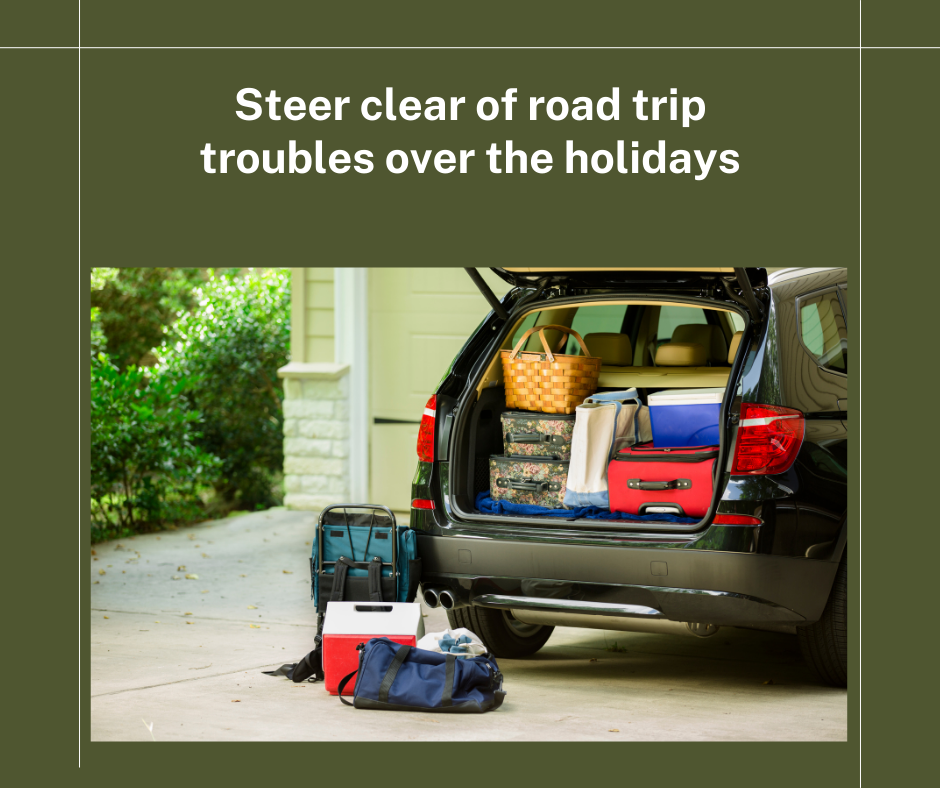With the festive season fast approaching, we South Africans are preparing for the great tradition of road trips. From the stunning Garden Route to the rugged Wild Coast, families are swapping expensive plane tickets for the adventure of the open road – thanks to our rising cost of living crisis. But a successful holiday journey requires more than just good vibes and a loaded playlist. Road trips can quickly turn sour if your car isn’t road-ready, leaving you stranded in the middle of nowhere or facing costly repairs.
To ensure smooth travels, here’s an essential guide tailored for South African drivers to avoid common car troubles and enjoy a stress-free holiday.
Start with a full vehicle check
Before you pack the bags and load the snacks, give your car a comprehensive inspection. Many vehicle issues that arise on long trips could have been avoided with a little preventive care. These are the most common holiday car problems and how to prevent them:
1. Overheating engines
South Africa’s summer heat can push your engine to its limits. Ensure your cooling system is in top condition by:
- Checking the coolant levels and topping up if needed.
- Inspecting the radiator for leaks or damage.
- Replacing any old or worn-out hoses.
Pro tip: If your car overheats while on the road, pull over, turn off the engine, and let it cool down completely before opening the bonnet. Driving with an overheated engine can cause serious damage.
2. Battery failures
Car batteries often fail without warning, especially in extreme heat or after long periods of inactivity.
- Have your battery tested at a local service centre to ensure it’s fully charged.
- Clean the terminals to remove any corrosion.
- If your battery is over three years old, consider replacing it before embarking on a long trip.
3. Tyre blowouts
With South Africa’s uneven road surfaces and infamous potholes, tyres take a beating.
- Inspect all tyres, including the spare, for signs of wear or damage.
- Ensure they are inflated to the correct pressure according to your car manual.
- Replace tyres with cracks, bulges, or tread depth below the legal limit of 1.6mm.
Pro tip: Carry a tyre repair kit or a portable inflator for emergencies, especially if you’re venturing into remote areas.
4. Brake problems
Your brakes are your car’s most critical safety feature, especially on winding mountain passes or crowded highways.
- Listen for squeaking or grinding noises when braking—these are signs of worn brake pads.
- Have your brake fluid checked and replaced if it’s old or contaminated.
- Check for spongy brake pedal responses, which may indicate air in the brake lines.
5. Faulty lights and wipers
Summer storms and early sunsets can create hazardous driving conditions.
- Test all exterior and interior lights, including indicators and brake lights.
- Replace wiper blades if they leave streaks or squeaks when in use.
- Top up the windscreen washer fluid to keep your visibility clear.
Know your dashboard warning lights
Your car’s dashboard is like its health monitor, alerting you to potential issues. Ignoring these warning lights can turn a minor inconvenience into a major problem. Here’s a quick guide to the most common warning lights and what they mean:
🛠️ Engine Management Light
- Indicates an issue with the engine, which could range from minor to serious.
- Action: Have it checked by a mechanic promptly to avoid further damage.
🪫 Battery Warning Light
- Signals the battery isn’t charging, potentially due to a failing alternator.
- Action: Stop driving immediately and call for assistance.
🛢️ Oil Level Warning
- Low oil pressure can cause catastrophic engine damage.
- Action: Pull over, check the oil level, and top up. If the light persists, seek professional help.
🔴 Brake Warning Light
- Suggests a fault in the brake system, which could compromise safety.
- Action: Stop driving immediately and have the system inspected.
⚠️ ABS Warning Light
- Indicates a problem with the anti-lock braking system.
- Action: Exercise caution while driving and have it checked as soon as possible.
Pack a road trip emergency kit
Even with a well-maintained car, emergencies can still happen. I have packed these essentials into my boot to be prepared:
- Basic tools: Screwdrivers, pliers, and a tyre wrench.
- Spare tyre and jack: Ensure you know how to use them.
- Jump leads: For unexpected battery issues.
- Torch and batteries: For nighttime breakdowns.
- First aid kit: Include bandages, antiseptic, and painkillers.
- Water and snacks: To stay hydrated and fuelled during delays.
- Phone charger and power bank: To keep your devices charged in case you need assistance.
Be ready for South Africa’s road challenges
Holiday traffic, unpredictable weather, and poorly maintained roads can test even the most experienced drivers. Here’s how to prepare:
- Plan your route: Use apps like Waze or Google Maps to avoid congested areas and find the quickest path.
- Rest frequently: South Africa’s vast distances make fatigue a real danger. Take breaks every 2-3 hours to stay alert.
- Be patient: Holiday traffic can be frustrating, but aggressive driving increases the risk of accidents.
Final checks before you hit the road
Before leaving home, complete these final tasks:
- Check that all your documents (driver’s license, insurance, and car registration) are valid and accessible.
- Ensure your petrol card or app is loaded, as some smaller towns still operate on cash.
- Verify your e-toll account status if travelling through Gauteng’s highways.
Drive smart, stay safe
A memorable road trip starts with a reliable car. By taking preventive measures and being prepared for the unexpected, you can avoid road trip troubles and focus on making lasting memories with your loved ones. For more tips on keeping your car in top shape, visit UsedCarReview.co.za—your trusted guide to all things pre-owned automotive in South Africa.

